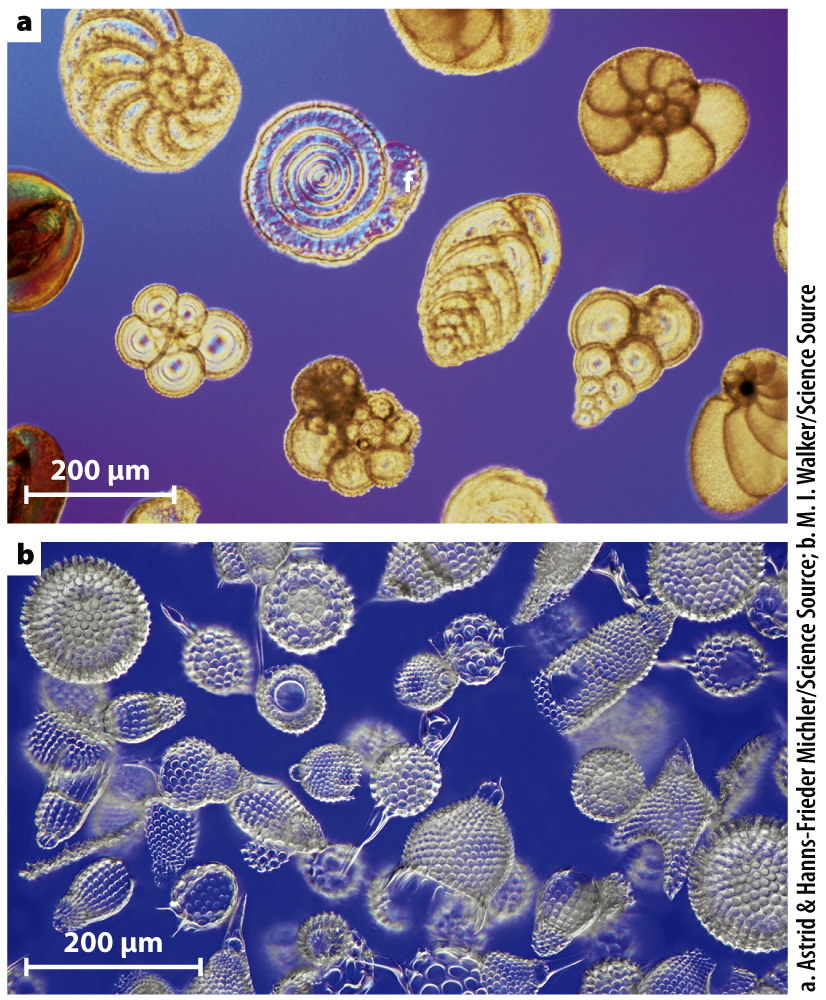Protists have continued to diversify during the age of animals.
Modern protistan diversity took shape alongside evolving animals during the Phanerozoic Eon, 541 million years ago to the present. For example, foraminiferans and radiolarians, marine protozoans with shells of calcium carbonate and silica, respectively, appear for the first time in rocks deposited near the beginning of the Phanerozoic Eon and have continued to diversify since that time (Fig. 27.23). Some algal seaweeds also evolved skeletons of calcium carbonate at this time, and diversified along with animals in Phanerozoic oceans. Why did algae and protozoans evolve mineralized skeletons? Presumably to keep from being eaten.

Marine protists underwent a new round of radiation during the Mesozoic Era, 252–
Within the oceans, diatom and coccolithophorid evolution had another important consequence. The silica skeletons of diatoms are now the principal means by which SiO2 is transferred from seawater to sediments. Similarly, the CaCO3 scales made by coccolithophorids and the skeletons of planktonic foraminifera are a primary source of carbonate sediments on the seafloor (Fig. 27.24). In this way, the ongoing evolution of protists in the age of animals has continued to transform marine ecosystems.

Today, microscopic eukaryotes dominate photosynthetic production in many parts of the oceans and play a major role in biogeochemical cycles. And for thousands of protists, plants and animals are simply habitats, ripe for colonization—